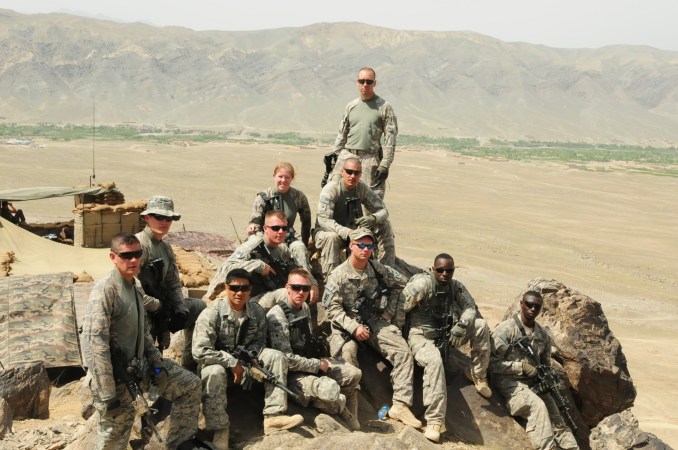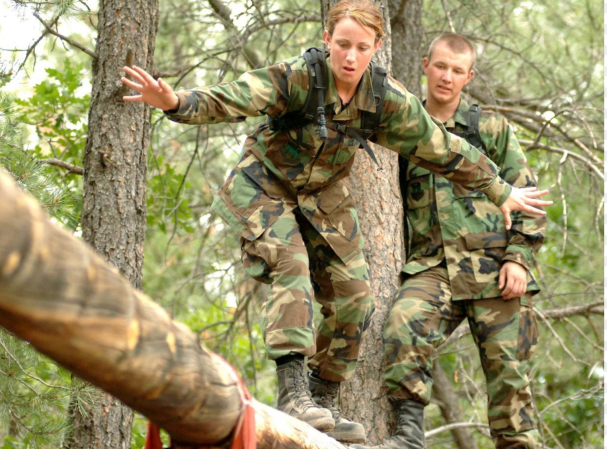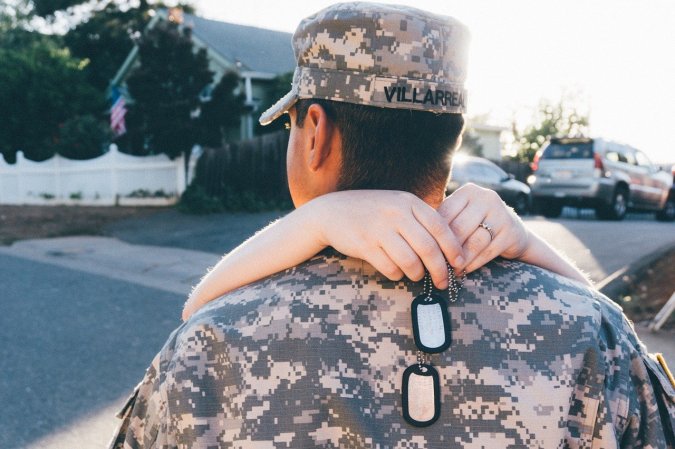Throughout history, women have played pivotal roles in the military. Women have served on the frontlines since the Revolutionary War – Margaret Corbin, famously defended Fort Washington in 1776 – but it wasn’t until 1901 that women were allowed to serve in the military in any official capacity.
“Albeit only in certain branches and typically in wartime,” Captain Veronica Bean, Public Affairs Officer for the 10th Combat Aviation Brigade at Fort Drum, told We Are The Mighty. “Since then, we’ve seen major legislative and institutional changes, including the Women’s Armed Services Integration Act of 1948, which allowed women to serve during peacetime and the Department of Defense’s 2013 decision to allow women to serve in combat roles.”
Here some facts about the critical role of women in the military
World War I was the first time the military opened to women on an official level by the Army.
Women were allowed to serve in the military when the need for manpower grew too large to ignore. “The country realized we needed all hands on deck to support the war,” Bean explained. “As women successfully completed their original duties, more and more jobs opened up to them. World War I served as a turning point where the nation saw how valuable women were to the war effort. It set the conditions for WAVES, WAACS and WASPS in World War II and generations of future service.”

Trailblazers from each branch include: Deborah Sampson, U.S. Army; Esther McGowin Blake, U.S. Air Force; Genevieve and Lucille Baker, U.S.Coast Guard; Loretta Walsh, U.S. Navy; Opha May Johnson, U.S. Marine Corps.
“The first women to serve in the armed forces enlisted in the Navy in 1917,” Bean shared. “While the women served stateside, they were afforded the same benefits and pay as their male counterparts. The military was one of the first institutions to offer equal pay between the sexes. This was a groundbreaking social change—remember, this was three years before the U.S. ratified the 19th amendment which grants women the right to vote.”
In January 2013, Secretary of Defense, Leon Panetta, lifted the ban on women in combat roles and gave the military two years to complete integration.
“Limiting the roles in which women could serve in the military effectively capped female career progression,” Bean said. “Take into consideration that the most senior strategic leaders – the chiefs of staff or combatant commanders for example – historically have combat arms backgrounds, which is why these positions were filled only by men until just a few years ago. The Department of Defense’s decision to allow women to serve in all capacities of the military freed women to also serve at all levels of leadership. As women progress up the ranks and fill these senior leader positions, we’re starting to have women, for the first time, impact decisions that ultimately affect the entire force.”

Today, women serve in all facets of the armed services.
“Gender diversity in the military makes us better, because it allows a myriad of experience and perspective to be included in the planning and decision-making process,” Bean explained. “More importantly, allowing women to serve in the same fashion as their male peers breaks down stereotypes about what women can and can not do both physically and professionally.”
Bean told We Are The Mighty that as a woman in the military, there are many women who currently serve or have served that inspire her.
“Army Gen (Ret.) Ann E. Dunwoody was the first woman in the military to achieve the rank of general. Needless to say, she was a trail blazer and an inspiration to all the women who have followed in her footsteps,” she said. “More recently, U.S. Army Reservist, LTC Lisa Jaster was the first female reservist to complete Ranger school -and the third of all components. I really admire her for her grit and tenacity, but especially because she took on that challenge – a school whose motto is “not for the faint or weak of heart” – at age 37 after having two children. The average trainee is 23. She’s a reminder that the only limits we have are the one we put on ourselves.”
Although the military has come a long way in equality, there is still work to be done.
“Being a female service member can be a lonely experience,” Bean said. “It’s quite common to sit through a series of meetings in which I am the only woman in the room. But despite this, or perhaps because of this, the bond which is shared between sisters-in-arms is stronger than anything I’ve ever experienced outside of the military. The mentorship and support that military women provide each other aren’t talked about enough.”
Looking toward the future of women in the armed forces, Bean is hopeful.
“Today’s military recognizes that our strength lies in our diversity, and our senior leaders are making significant changes to grooming standards, uniforms, and training programs in order to recruit and retain women,” she said. “I’m excited about what the future holds, and I hope more young women will consider joining the profession of arms.”










